As one of the most popular grains worldwide, rice is part of almost every great culinary tradition. This can lead to culture clashes when different cooks meet, even over simple matters like whether to rinse your rice. In much of Asia, where rice was first domesticated, thorough washing is an unavoidable part of cooking perfectly steamed rice. In many Western countries, a greater tolerance for clumps and a habit of adding powdered vitamins before sale has made rinsing less common, and even nutritionally harmful. Whatever you were taught, it’s worth trying a thorough wash at least once, to bring a simple bowl of rice to the heights it deserves.
StepsPart 1Part 1 of 2:Rinsing Rice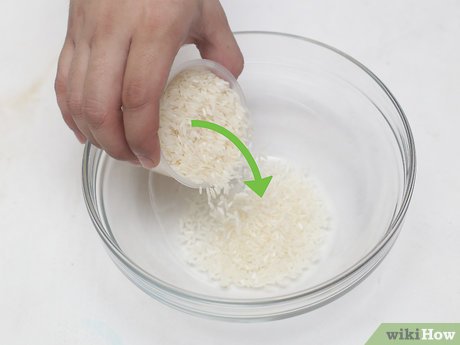
1Pour the rice into a bowl. Choose a wide bowl with room to stir the rice. You can instead use a special rice-draining colander, which has extra-small holes so the water pools and drains slowly.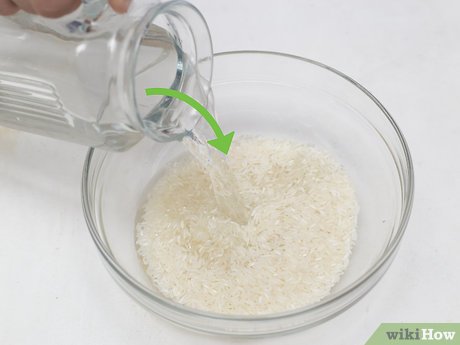
2Submerge the rice in water. Fill the bowl with tap water until the rice is completely covered. About three times as much water as rice should work.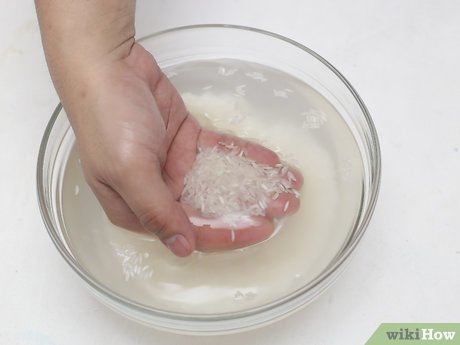
3Stir the rice around with clean hands. The rice will rub against itself, your hands, and the bowl, which scrapes the starch off. Use light pressure to avoid breaking the rice grains.X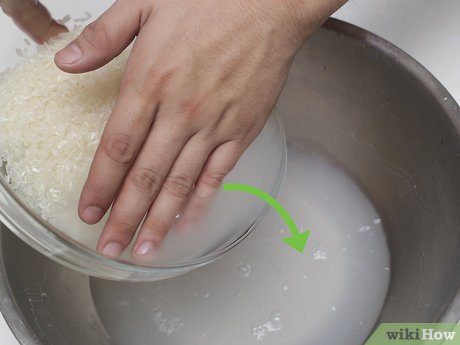
4Tilt the bowl to pour out the starchy water. Since rice is not buoyant, it will sink to the bottom of the bowl. Pour out the cloudy water, plus anything that has floated to the surface. Pour the water through the palm of your hand so you can catch any rice that slips out.XIf the water looked dirty or an opaque, milky white, you can repeat this process with a second bowl of water.As long as there is no dirt or pesticides in the water, you can save it to add to recipes. The most common use of starchy water is as a thickener for sauces.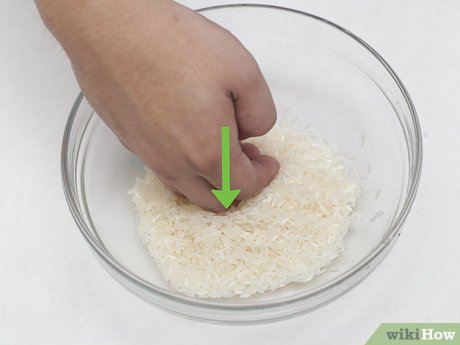
5″Punch” the rice gently. At this point, many Western cooks may be satisfied moving on to cooking the rice. Japanese and other Asian traditions, however, put great value in cleaning the rice thoroughly to achieve a perfect, fluffy texture. The next step in that process is “polishing” the rice grains against each other. Curl your fingers into a loose fist and punch the rice gently at a steady pace. Turn the bowl between punches to move the wet rice around the bowl, grinding it lightly against itself.X
6Rinse and repeat. After a few punches, pour in more water, swirl the rice around, and pour it out again. “Punch and turn” a few more times, add more water, and pour it out. Repeat this until the water runs clear. Depending on the type of rice and how it was processed, this may take a couple bowlfuls of water, or it may take several minutes of washing.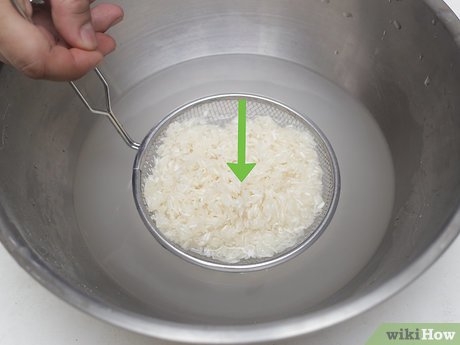
7Soak the rice if desired. Transfer the wet rice to a mesh sieve to drain. Leave it there to soak for at least thirty minutes if you have the time. This gives the moisture on the rice time to soak into the center of the grain, ensuring an even texture once cooked.Soaking your rice lowers the cooking time. The exact amount of time it saves depends on the type of rice and how long you soaked it, so you may need to experiment.Aromatic rices such as basmati and jasmine rice benefit from soaking in another way. The flavor components that create the aroma are destroyed by cooking, so shorter cooking times means a more aromatic final dish.XPart 2Part 2 of 2:Deciding When to Rinse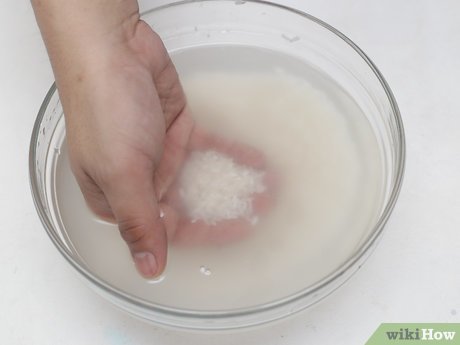
1Understand the effect of rinsing on starch. One major effect of rinsing is the removal of starch that clings to the outside of the rice grains. If left unrinsed, the starch can cause rice grains to stick together, creating clumps or a glutinous texture.X When you’re making steamed rice, rinse it first to remove the starch and make clump-free, fluffy rice. If you’re making a creamy dish like risotto, or a sticky dish like rice pudding, however, you need the starch to achieve the right texture. Thorough rinsing will remove that starch and leave you with a watery dish.XShort-grain rice is the most likely to stick together, while long-grain rice like basmati tends to cook into dry, separated grains.XIf you want to make risotto but the rice is dirty, rinse it, then add a couple spoonfuls of homemade rice flour to the recipe. This will return the starch to the dish.X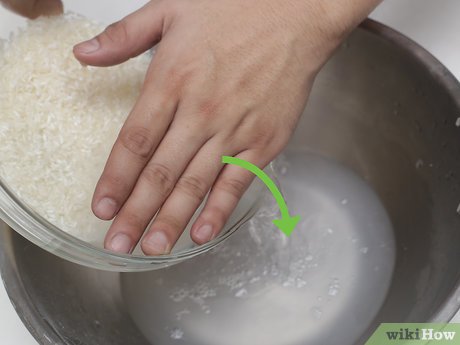
2Rinse off contaminants. In the United States, most domestically grown rice has been washed before sale, and contains few contaminants. Rice grown in many other countries, however, may contain dirt, insects, pesticides, or small rocks. If you notice a powder on the surface of the grain, this may be talc or another substance added to improve appearance. This is edible, but your rice will cook better and taste better if you rinse it off.XContaminants may be more likely in bulk bags of rice.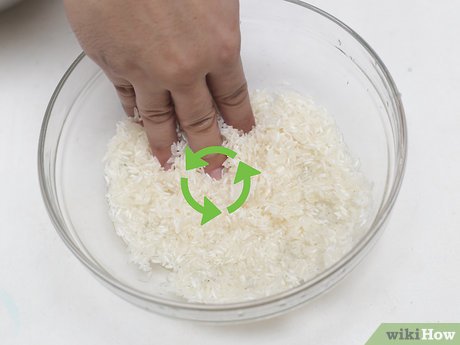
3Save the nutrients on enriched rice. Enriched white rice has been thoroughly washed, then coated with a dust of vitamins and nutrients. Rinsing will remove a large portion of these beneficial ingredients.This rice is typically low in dirt and other contaminants, but it does still contain surface starch.In the United States, some enriched rice labels include a warning not to rinse the rice for this reason. If U.S. enriched rice does not have this label, you can rinse it for one minute without major loss of nutrients.X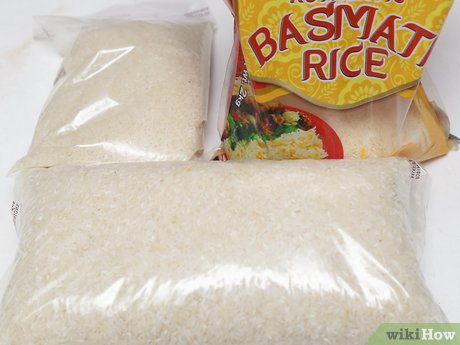
4Consider arsenic risk for young children. More than other crops, rice tends to pick up arsenic that naturally occurs in water and soil. If rice is a major part of an infant’s or pregnant woman’s diet, this could affect the child’s development. The US FDA recommends feeding babies and toddlers a variety of grains (instead of only rice) to reduce this risk. Rinsing only has a small effect on arsenic content. A more effective treatment is cooking the rice in lots of water (a 1:6 to 1:10 ratio), then draining the excess water before eating.








